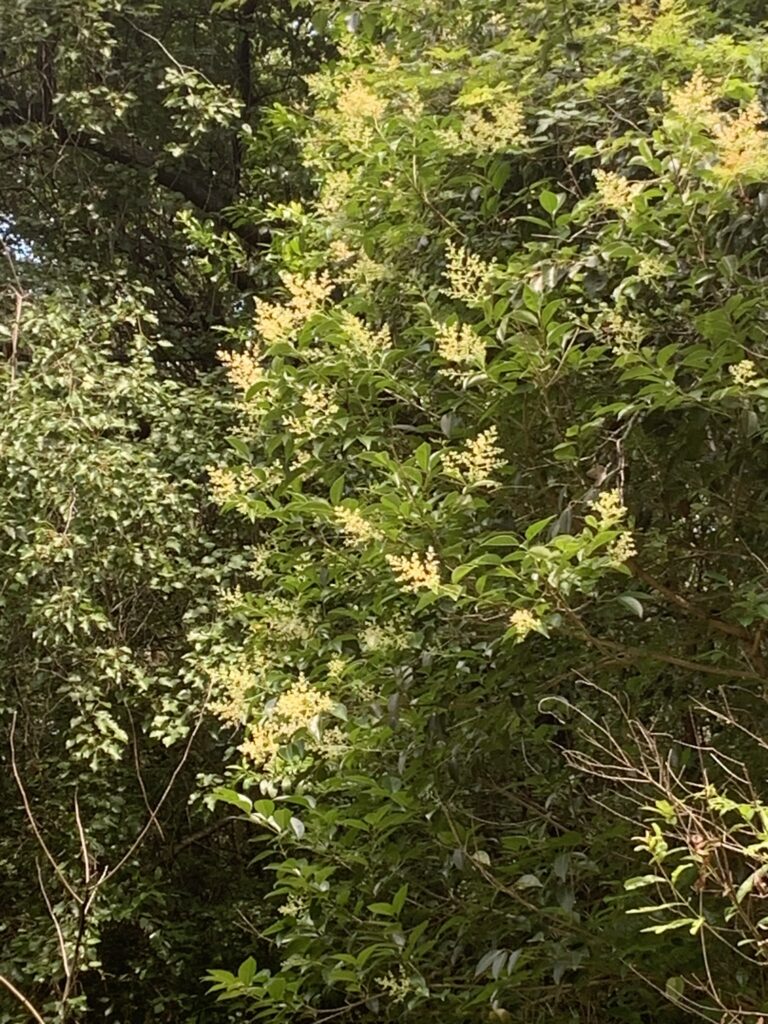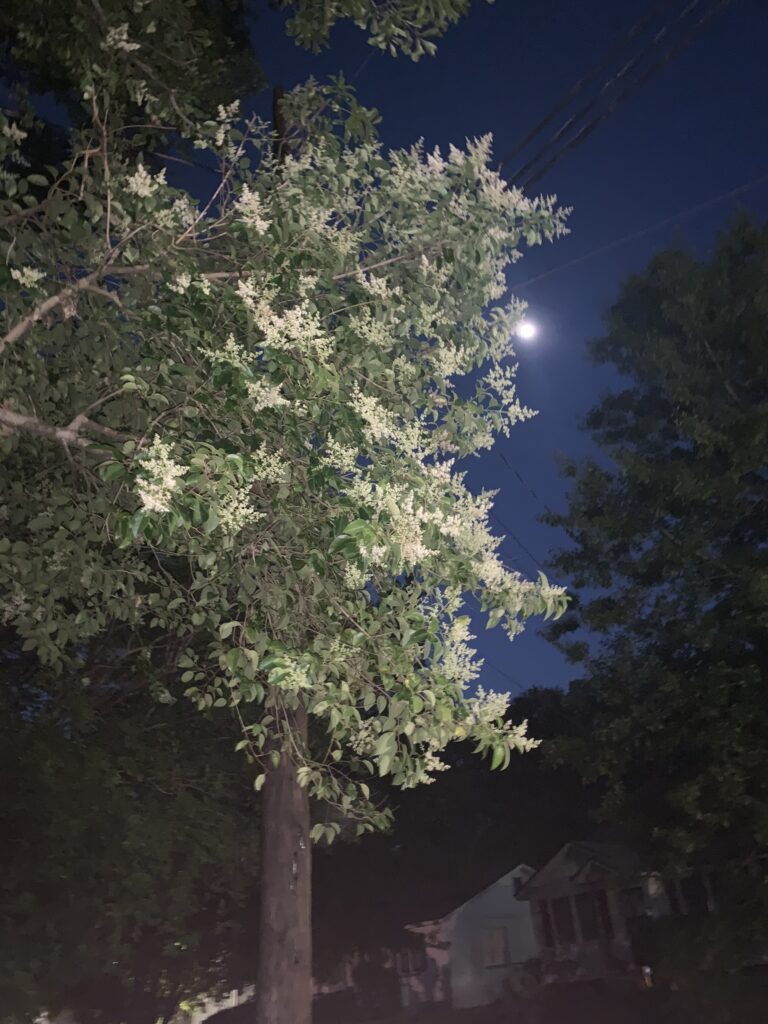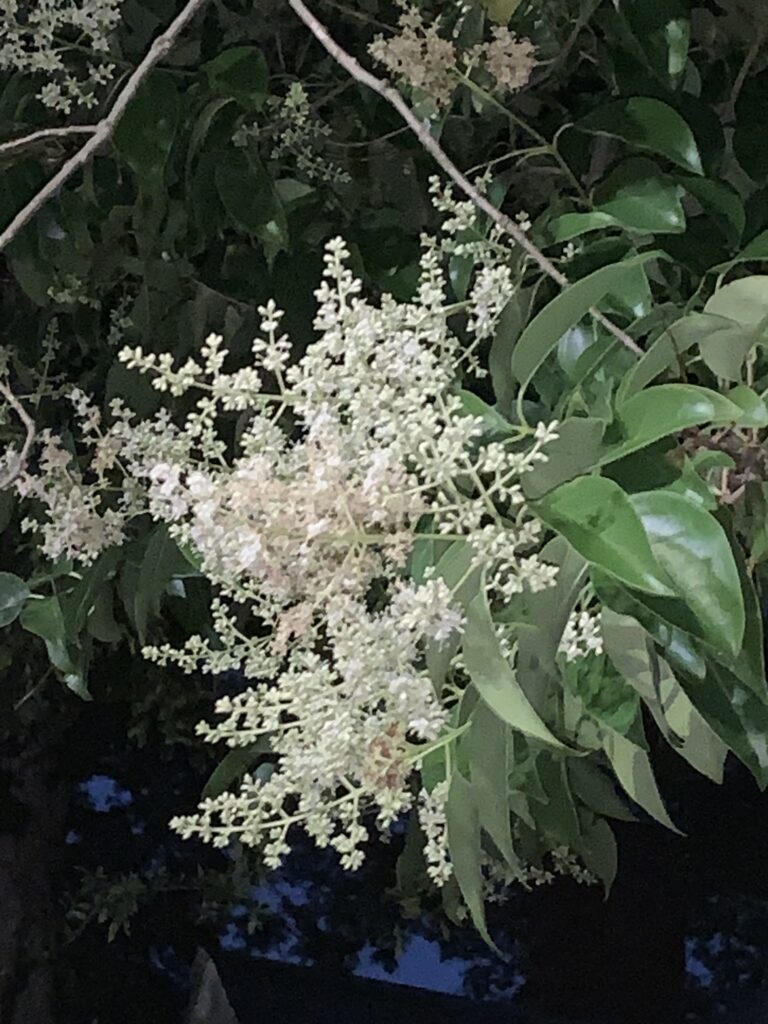



Glossy privet (Ligustrum lucidum) is a species of flowering plant in the olive family, Oleaceae. Native to China, it has been introduced to many other regions around the world, where it is often used as an ornamental plant in gardens and landscapes. However, it has also become an invasive species in several areas, particularly in the southeastern United States, including Alabama.
Description
Physical Characteristics
- Leaves: Evergreen, glossy, dark green, and leathery, with a pointed tip. They are typically 5-15 cm long and 2-6 cm wide.
- Flowers: Small, white, and fragrant, appearing in large, pyramidal panicles in late spring to early summer. The flowers are attractive to bees and other pollinators.
- Fruits: Small, oval, and dark blue to black berries that mature in late summer to fall. These berries are consumed by birds, which helps in seed dispersal.
Growth Habit
- Size: Glossy privet is a fast-growing shrub or small tree that can reach heights of 10-15 meters (33-49 feet).
- Habitat: It thrives in a variety of soil types and can tolerate a range of environmental conditions, including full sun to partial shade. It is often found in disturbed areas, forest edges, and along roadsides.
Ecological Impact
Invasiveness
Glossy privet is considered an invasive species in many regions outside its native range. Its ability to grow rapidly and produce a large number of seeds allows it to outcompete native vegetation. This can lead to a reduction in biodiversity, as it forms dense thickets that crowd out native plants and alter the structure of natural habitats.
Control Measures
Controlling the spread of glossy privet involves several methods:
- Mechanical Removal: This includes pulling or digging out young plants and cutting mature trees. Repeated cutting is often necessary to deplete the plant’s energy reserves.
- Chemical Control: Herbicides can be applied to cut stumps, basal bark, or foliage to kill the plant. This method requires careful application to avoid damaging surrounding vegetation.
- Biological Control: Research is ongoing to find natural enemies that can be used to control glossy privet populations, although no effective biological control agents have been widely implemented yet.
Uses
Ornamental Plant
Glossy privet is popular in ornamental landscaping due to its attractive foliage, fragrant flowers, and ease of maintenance. It is often used for hedges, screens, and specimen plants in gardens.
Traditional Medicine
In traditional Chinese medicine, glossy privet has been used for various purposes. The fruit is believed to have health benefits and is used in remedies for conditions such as dizziness, tinnitus, and premature graying of hair.
Recommendations
Given its invasive potential, it is advisable to avoid planting glossy privet in areas where it is known to spread uncontrollably. Instead, consider using native or non-invasive alternatives for landscaping purposes to help preserve local biodiversity and ecosystem health.
In summary, while glossy privet can be a useful ornamental plant, its invasive nature requires careful management to prevent ecological harm. Monitoring and controlling its spread is crucial in areas where it poses a threat to native plant communities.
-ChatGPT 4o
